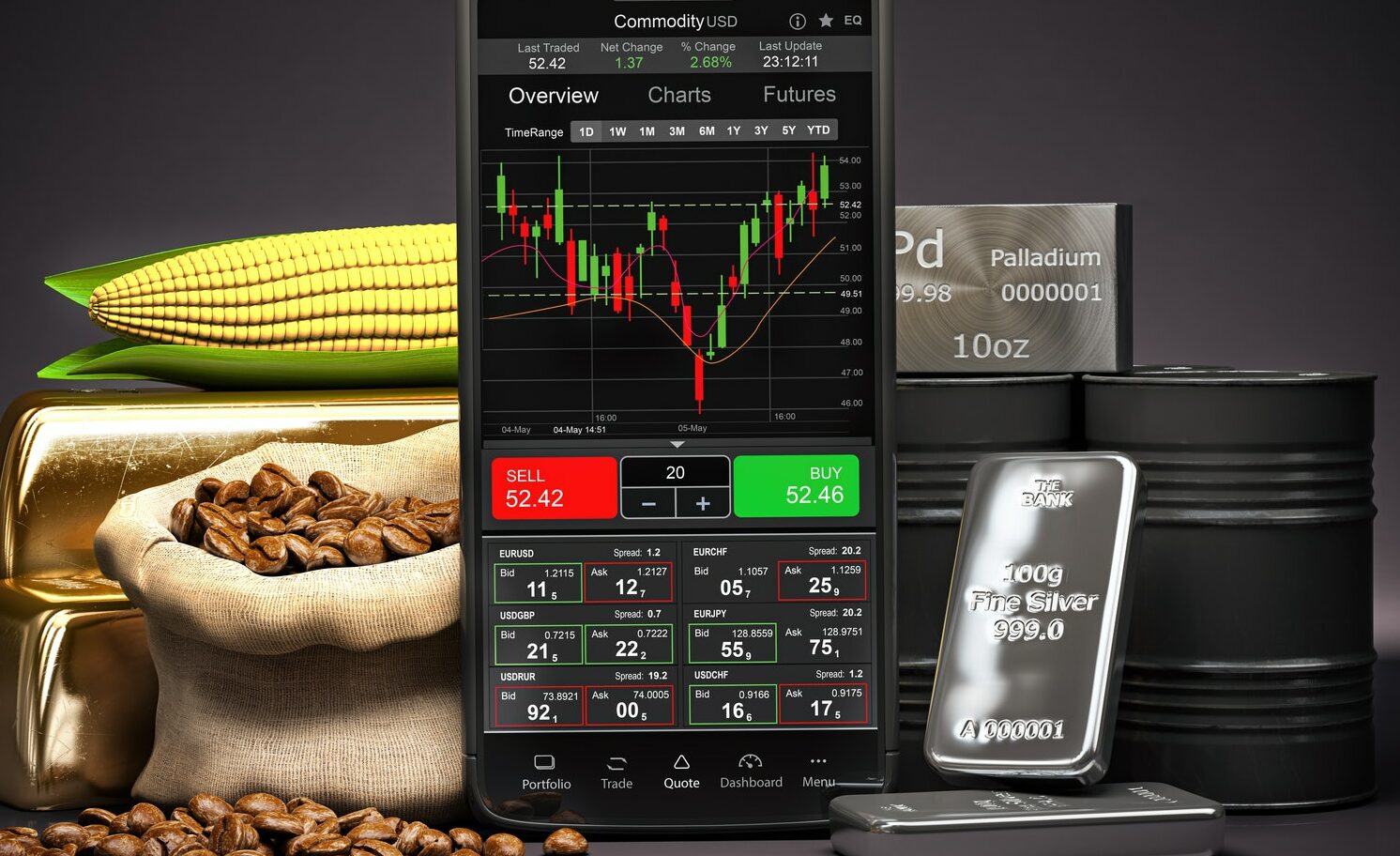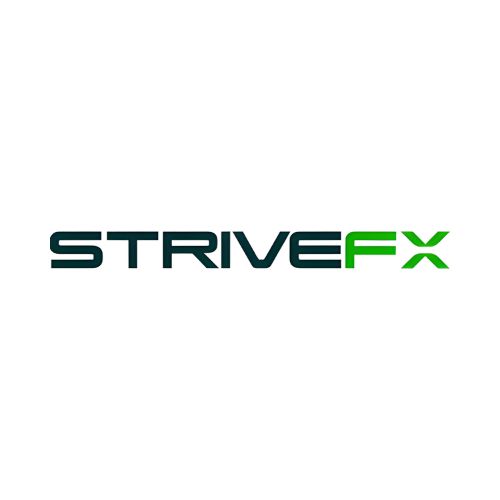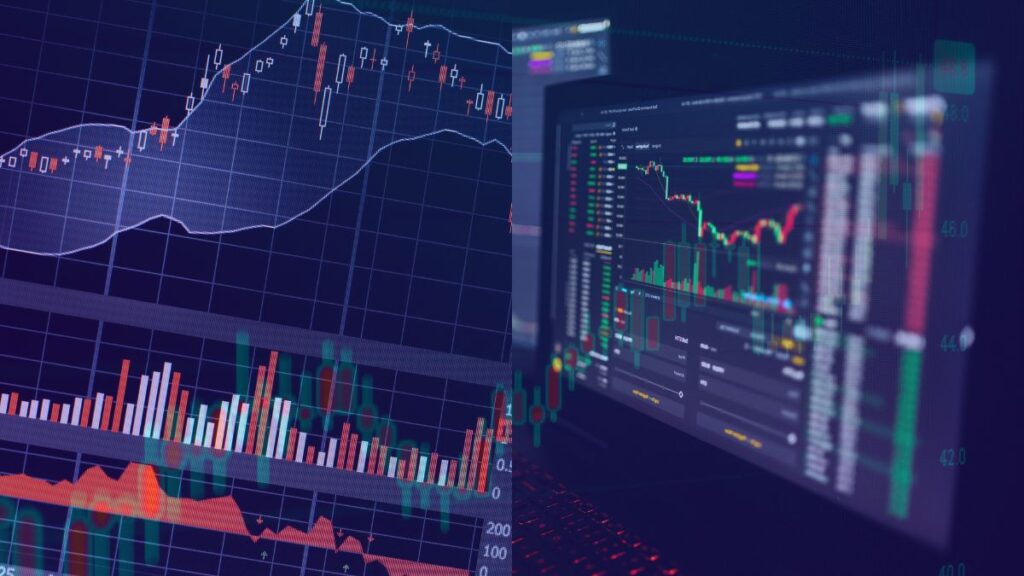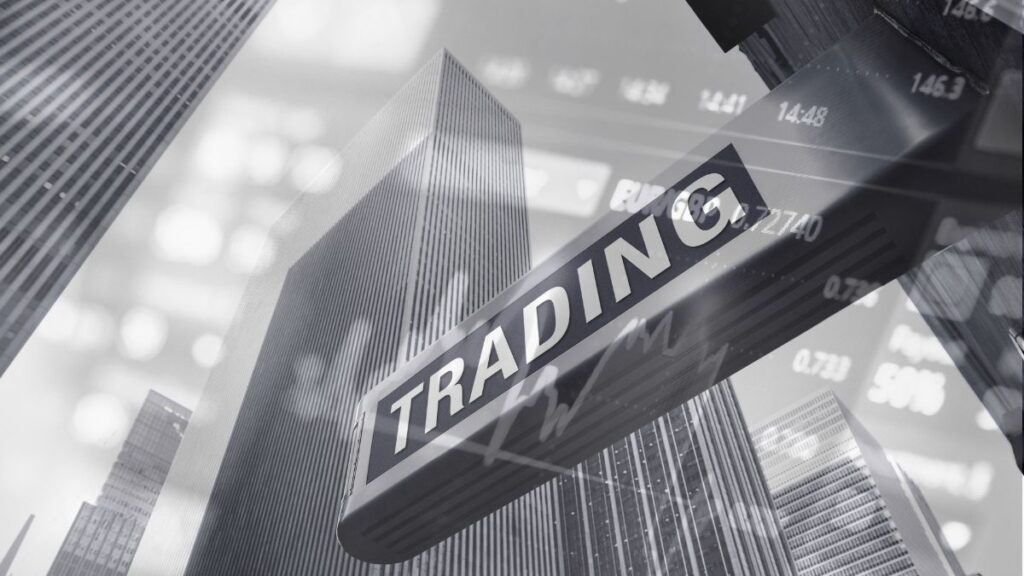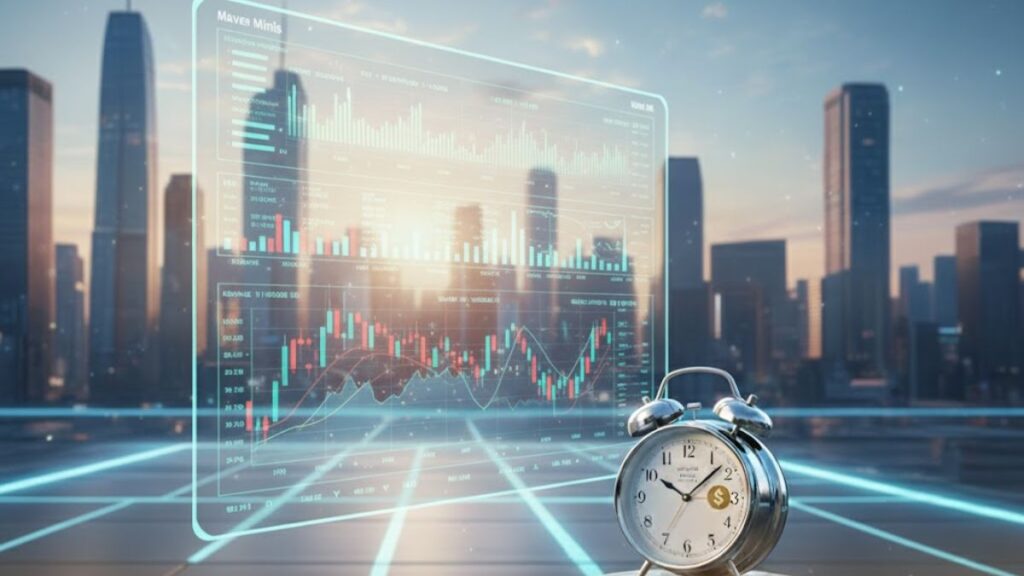What is Commodity Trading?
A commodity is a class of assets or items used in daily life, such as food, energy, or metals. By definition, a commodity is alternate and exchangeable. Commodity trading is the buying and selling of various commodities and their derivative products. Commodities are classified into three types in the context of trading. The first type of commodity is metals. Gold and silver would fall under this group. The second commodity in agriculture such as corn and coffee. The third is energy commodities such as oil and coal.
What are the Types of Commodities Trading Markets?
Commodity trading often takes place on spot markets or in derivatives markets.
Spot Market
The trading of physical commodities for immediate delivery takes place on “spot markets,” which are often referred to as “cash markets” or “physical markets.”
Derivatives Market
Futures and forwards are two forms of commodity derivatives in derivatives markets. These derivatives contracts offer the owner control of the underlying asset at a future time for a predetermined price and use the spot market as the underlying asset. The commodity or item is delivered physically when the contracts expire. The fundamental distinction between forwards and futures is that the former may be modified and traded over the counter, while the latter is standardized and exchanged on exchanges.
What are the Advantages of Commodities Trading?
Transparency
Since commodity trading occurs on exchanges, there is complete transparency and no price manipulation by either buyers or sellers. When both parties’ pricing is in agreement, the transaction is complete.
Protection Against Inflation
The cost of the raw materials, or commodities, rises in response to an increase in demand for products and services, which increases the price of those goods and services. Inflation causes a decline in stock values. In contrast, the increased demand causes significant price increases in the raw materials needed to manufacture finished goods, which eventually drives up the cost of the finished goods.
As a result, investors turn to commodities futures to protect their money from inflation’s impacts and keep its value.
Diversification
Commodities have a negative or low correlation with stocks. Typically, commodities are the raw resources needed to produce the completed items. The losses in stocks might be offset by the profits made by commodity futures because of the negative correlation that occurs when the price of commodities rises and drives down equity prices. Thus, adding commodities to your portfolio will diversify it.
Liquidity
Online commodities investments are a better choice than real estate or fixed deposits since they are 100% liquid and available for sale at any moment. Commodities are simple to buy and simple to sell, similar to stocks. Because of this, using commodities derivatives might be a secure option if you want more control over your money.
How to Trade Commodities?
Physical Purchases
There are still those who prefer to stockpile actual precious metals in their vaults. This makes little sense as a store of value. But on occasion, we value a tangible asset’s security.
Paying for storage and insurance is a drawback. Then, when it comes time to sell, you must look for an interested customer, agree on a price, and deliver the products.
Given that they are backed by physical commodity holdings and give investors a method to trade in and out of the market without ever having to acquire the real thing, physical ETFs may offer a workable solution in this situation.
Futures
Trading these contracts for monetary benefit without expecting to get an oil or soybean cargo has a huge market.
ETFs are available to track the wide range of prices for various commodities futures and may be a better option for individual investors than derivative-based products, which can be riskier.
Commodity Stocks
Investing in companies engaged in commodity production and supply chains is one way for investors to have access to the commodities industry without having to consider the actual materials being produced. Commodity price movements that are counter to stock price movements might entice investors to use commodities as a hedge in their portfolios.
Commodity ETF
These are investing tools that store or monitor the performance of a portfolio of assets, such as commodities or stock prices. Some ETFs maintain physical ownership of the assets they invest in. ETF trading may be a wonderful strategy to increase exposure to a variety of commodities or equities that are connected to commodities from a single holding.
What is the Difference Between Futures and Options?
Futures contracts are commodity derivatives. This implies that when traders and speculators finish their trades, they are not required to assume ownership of the physical items.
Another kind of derivative is futures options. The term “futures contract options” is another name for options. Essentially, futures options are choices that you may buy on a futures contract. You have the option to purchase or sell the futures contract when you have an option.
What is Commodity CFDs?
Contract for Difference, or CFD, refers to financial contracts that pay investors for price disparities between open and closing deals.
CFDs are derivative products, so when you enter one, you don’t own the underlying asset. When you buy a CFD, you make predictions about the underlying instrument’s price fluctuations without actually purchasing the asset.
What are the Best Commodities to Trade?
The most traded commodities on a global scale include soybean, cotton, wheat, corn, natural gas, gold, silver, crude oil, Brent oil, and coffee.
- Crude Oil: One of the most sought-after commodities is crude oil. The need for crude oil is rising every day, in part because of the surge in demand for vehicles, along with various byproducts including petroleum and diesel.
- Gold: For most individuals, gold has traditionally served as an anchor. For security, we begin purchasing more gold when the US dollar’s price value declines, and the opposite is true when the dollar’s price value increases: gold prices tend to decline. These two variables have an inverse connection.
- Soybean: One of the most popular commodities is soybean, although it is frequently influenced by external variables like the weather, the demand for dollars, and the demand for biodiesel.
- Natural Gas: Since CNG is very environmentally friendly, numerous companies have begun employing it for a variety of uses in recent years. Asian oil prices influence the price of natural gas. And changes in oil prices have an influence on the cost of CNG. Imports and exports, economic expansion, storage capacity, and other factors all have an impact on pricing.
What are the Best Commodity Trading Strategies?
Geopolitical Analysis
A nation’s geography and the unavoidable effects of that geography are taken into account in the geopolitical analysis. Examining a nation’s natural resource limitations, its ease of access to the outside world, and its internal transportation infrastructure are important examples. Geopolitical events in a global world can have a significant impact on commodities markets.
Day Trading Commodities
Futures on commodities with high liquidity, such as crude oil and gold, make them suitable for day trading. Commodity futures day trading offers a different asset mix from the more typical equities or index-based trading.
Traders get access to a lot of commodities. You must spend time learning about the characteristics of each commodity before you ever consider trading it. You want the commodity you choose to have a few qualities, ideally.
First, it needs to have adequate liquidity. This implies that there will be a huge demand for it. By choosing such a commodity, you will be able to initiate and exit trades whenever you choose.
The media should also cover the commodities. Such a product helps in your ability to obtain relevant news.
Look for Support and Resistance Levels
Levels of support and resistance can provide traders with additional information about the strength of a price trend. The phrases “support” and “resistance” refer to two separate price levels that appear to restrict the market’s range of movement. The resistance level is where the price typically stops rising and sinks back down, whereas the support level is where the price often stops dropping and rebounds back up. The levels are a result of supply and demand: if there are more buyers than sellers, the price may increase; if there are more sellers than buyers, the price is more likely to decrease.
Learn Technical Analysis
The best method to understand technical analysis is to thoroughly comprehend its fundamental ideas before applying them through backtesting or paper trading. Today’s technology makes it possible for many brokers and websites to provide electronic trading platforms that imitate real-world marketplaces.
Technical analysis is effective and can provide you with a competitive advantage. But using only technical analysis won’t make you a successful trader. You must possess an effective trading strategy.
Conclusion
These are the fundamentals that can help you decide how to start commodity trading. Risk management techniques, price or leverage risk, and other relevant factors must take into account. Aside from changes in supply and demand, consumer and production trends may also affect commodity prices.
You may be able to access an entirely new market through online commodity trading. Many people believe that commodity trading is more reliable than equities stocks. However, experienced stock and sector investors believe that equities stocks are more profitable and simpler to grasp than commodities.
Ultimately, your capacity to accept risk rather than your emotions should determine whether you should invest in a commodity.
